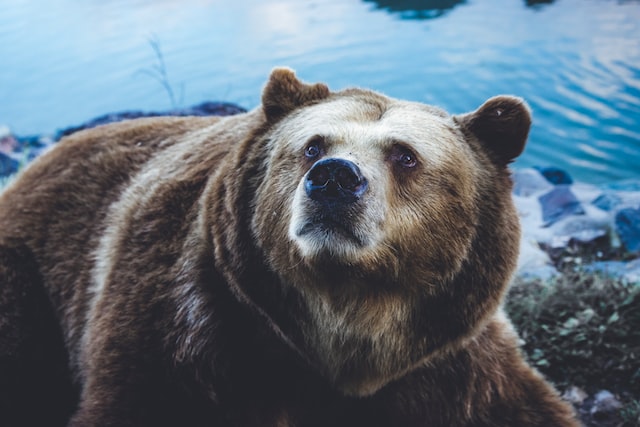Are you a night owl or an early bird? According to science, the honest answer may not be that simple.
Sure, certain people prefer to rise earlier than others while some would rather snooze the morning away and stay up late into the wee hours of the night.
But there may be more than just two types of preferences.
In fact, recent research has revealed that there are several sleep chronotypes that determine the time of day that you may naturally be most productive.
What is A Chronotype?
Your chronotype refers to the natural point of the day in which you prefer to rest in comparison to when you feel the most active and motivated.
Sleep chronotypes are related to our circadian rhythm, which helps to regulate our sleep-wake cycle by releasing sleep-inducing hormones like melatonin based on light exposure.

However, circadian rhythm can shift by switching up your sleep schedule, while our chronotype is thought to be a hardwired biological preference for a certain type of routine.
For example, if you identify as a night owl, you may still be able to wake up at 6 AM every morning to make it to work. That said, you may not be productive as soon as you get there.
Crushing tasks becomes easier as the day wears on, whereas a natural early riser may get more done in the morning but lose steam just as a night owl reaches peak productivity.
The concept of chronotypes is the result of an increase in humanity’s curiosity about sleep.
Professor Nathanial Kleitman first introduced the idea in a 1939 book called “Sleep and Wakefulness.” Within the book, he proposed the idea that each person has a rest and activity cycle.
In 1970, the term “chronotype” was dubbed during research into individual circadian rhythms at the University of Göteborg in Sweden.
@somnifix Are you a #nightowl or an #earlybird 🤔 The 4 #sleep #chronotypes say neither one! Share which one you are in the comments! 🐻🐺🦁🐬 #greenscreen #didyouknow #learnontiktok ♬ Aesthetic - Tollan Kim
As the term has evolved, the chronotypes have become separated into different animals. Lions, tigers, and bears, oh my! Lions, wolfs, dolphins, and bears, that is.
The bear sleep chronotype is the most common and accounts for about half of all people.
The Bear Sleep Chronotype
While bears have a reputation for hibernating, those that are part of the bear sleep chronotype are just the opposite.
The bear sleep chronotype accounts for around 50 percent of the population.
Those who identify as bears usually follow the sun. Bears wake up early in the morning, with little to no issues falling asleep at night.

Bear sleep chronotypes are most productive between the hours of 10 AM and 2 PM but may feel an afternoon slump sometime after eating lunch.
If bear types don’t get an adequate amount of rest, they may fall asleep earlier than their usual bedtime, which is typically somewhere around 11 PM for most.
Bears are commonly extroverted, thriving in go-with-the-flow situations.
Opposite the bear is the wolf sleep chronotype. Unlike the bear, the wolf feels most productive in the evening.
The Wolf Sleep Chronotype
When you think of wolves, you likely think of the moon, which isn’t far off when it comes to this late-night chronotype.
Those who identify as wolves account for 15 to 20 percent of the general population.
They may have a later bedtime than most, usually not falling asleep until after midnight. Wolves tend to feel their most creative and focused between 5 PM and 12 AM.

These late-night lovers are typically creative and introverted, benefiting from getting ahead on work while at home and feeling their most alert.
Mornings are groggy and slow for wolves, as they align with what we customarily refer to as night owls.
Those who are lions, however, are what we commonly call early birds.
The Lion Sleep Chronotype
Just as a lion wakes to protect its pride, this chronotype is up and at'em first thing in the morning.
Lions get things done in the mornings between the hours of 8 PM and noon and account for around 10 to 20 percent of people.
They wake up early, usually somewhere around 6 AM, and usually go to sleep at a very modest hour such as 10 PM.

These early risers are thought to be charismatic and strong leaders, attacking tasks right after waking up, unlike their counterparts.
However, if you’re a lion, you may struggle with knowing when it’s time to slow down. By lunchtime, these chronotypes may be feeling fatigued.
The dolphin sleep chronotype is in between wolves and lions in terms of the time of day they feel most focused.
The Dolphin Sleep Chronotype
While the wolf chronotype is thought to be full of night owls, the dolphin sleep chronotype is full of insomniacs.
Those who fall under the dolphin sleep chronotype report irregular sleep and wake patterns, often finding it hard to maintain a consistent routine.
Dolphins are thought to be scatterbrained, experiencing intermittent bursts of creative energy.

Moreover, they tend to sleep because their body and minds need to rather than willingly winding down.
Around 10 percent of adults identify as part of the dolphin sleep chronotype.
You may have an idea of which sleep chronotype you fall under. But how can you know for sure?
Revealing Your Chronotype
Certain factors influence your chronotype, like genetics, age, gender, and environmental factors.
The quickest way to find your chronotype is to take a quiz that assesses your habits, sleep patterns, and preferences for productivity.
Some available quizzes include:
As we’ve learned, every chronotype has different strengths and weaknesses.
Once you’ve identified your chronotype, you may be wondering how to optimize your schedule to fit your biological needs.
For example, if you’re a member of the bear sleep chronotype, slowing down in the mornings may keep you from losing steam in the afternoon.
Wolves may benefit from quick breaks between tasks during the day to stay recharged, saving harder, intense tasks for the late afternoons and evenings.
Lions should avoid important tasks and meetings after lunch, as their energy wears off as the day progresses.
Finally, for those within the dolphin sleep chronotype, taking on more intense tasks as productivity strikes is key.
You might be wondering if it’s possible to shift your chronotype completely.
Can I Change My Chronotype?
While you can’t change your chronotype itself, it may begin to shift naturally with age.
For instance, most children have an earlier chronotype, but this shifts as we enter adolescence to a later time frame.
As many adults age and their sleep needs change, their chronotype shifts back to an earlier time slot again.
This is all connected to chronobiology, which is extremely intricate. You may even fit somewhere in between a couple of chronotypes rather than fitting the specific criteria of just one.

If you’re struggling to follow a schedule or feel like you’re stuck between two chronotypes, there are a few things you can do to improve your sleep quality and circadian rhythm.
For starters, ensuring that you expose yourself to sunlight in the morning keeps your internal clock functioning properly.
Moreover, you should avoid blue light from your phone, tablet, and television at least two hours before bed, as this light tricks your body into thinking it’s still daytime.
Cut out distractions as you sleep, like disrupting noise. This includes snoring, whether it’s yours or your partner’s.
Snoring fragments sleep, regardless if you’re the snorer or the one forced to sleep next to one.

SomniFix Mouth Strips seal the lips at night, keeping you from mouth breathing – the primary cause of snoring.
Our Mouth Strips are non-irritating, comfortable, and most importantly, they’ll help you keep your internal clock functioning as it should.
SomniFix stops snoring in its tracks, helping you get the quality rest you need whether you’re a bear, wolf, lion, dolphin, or somewhere in between!



